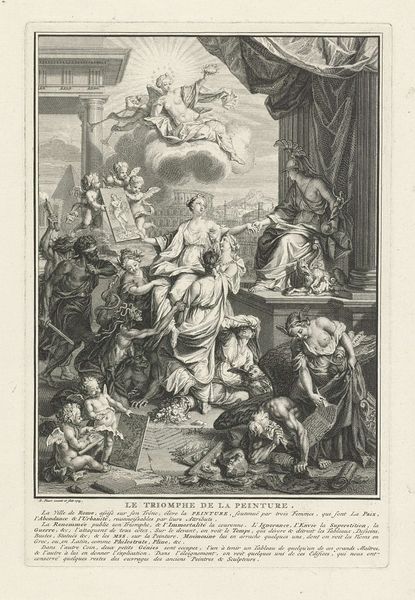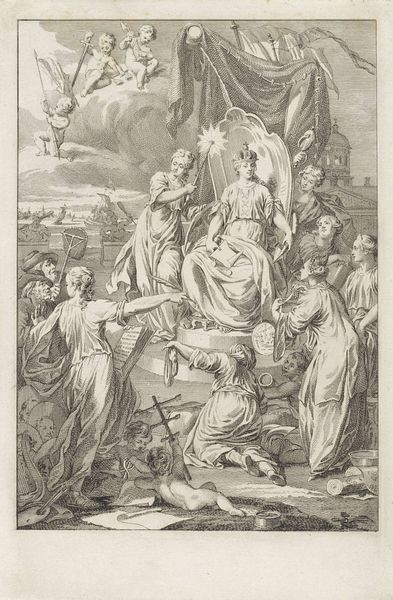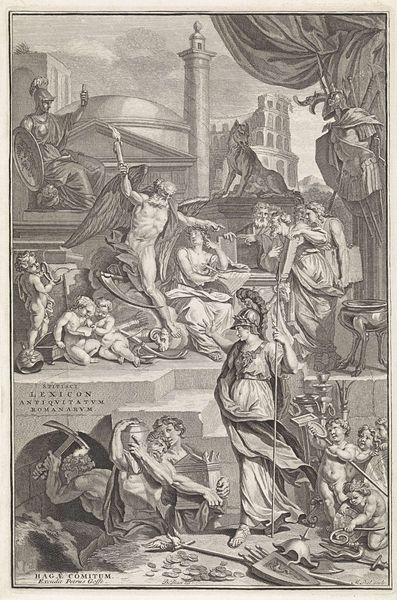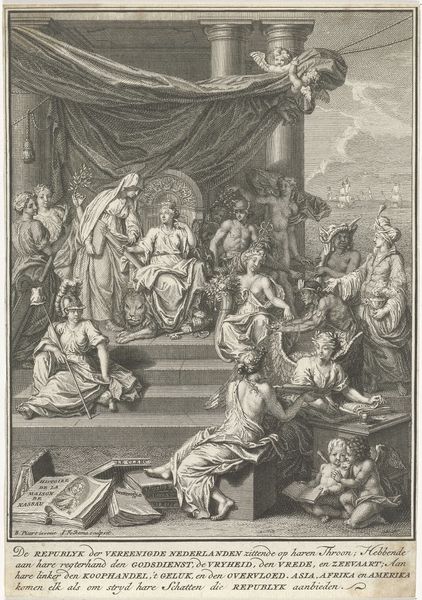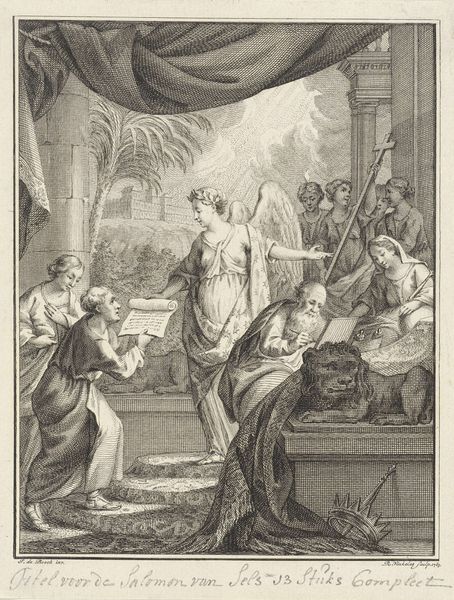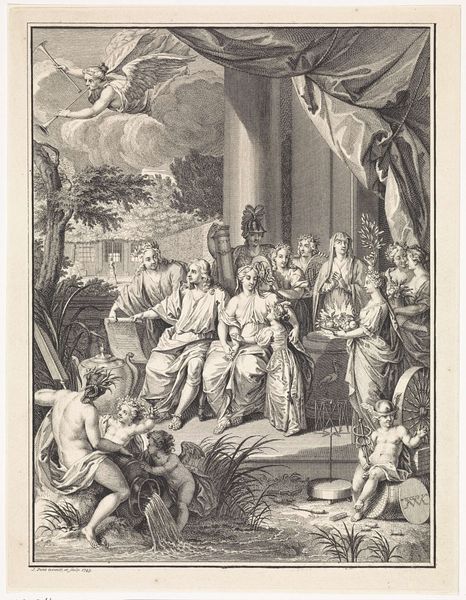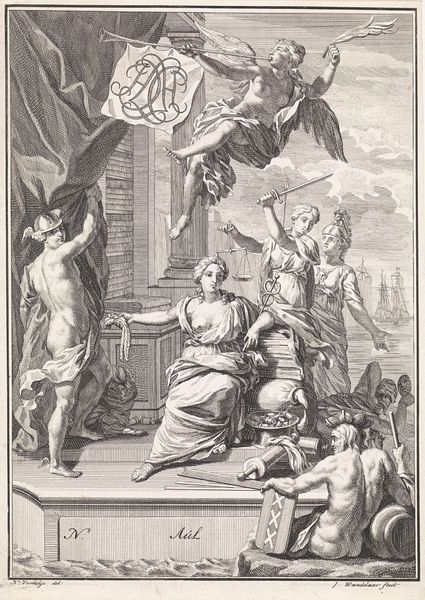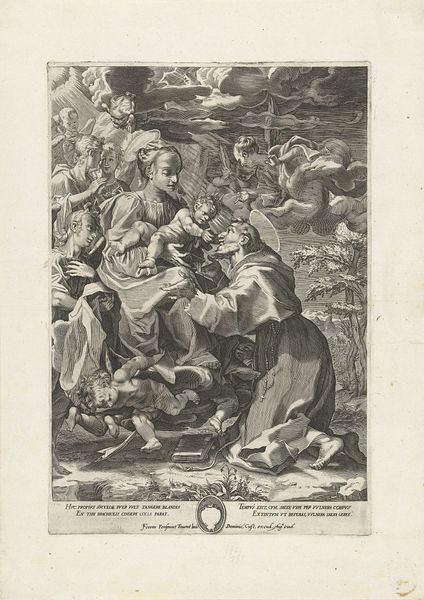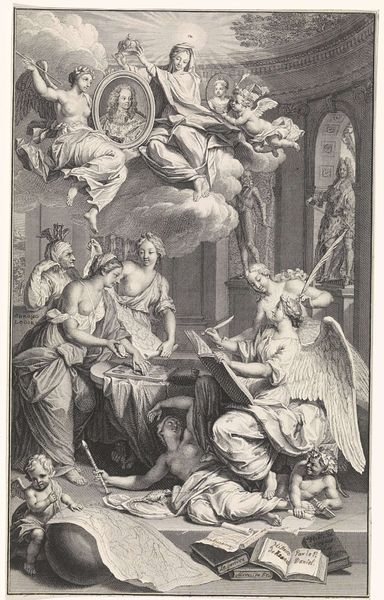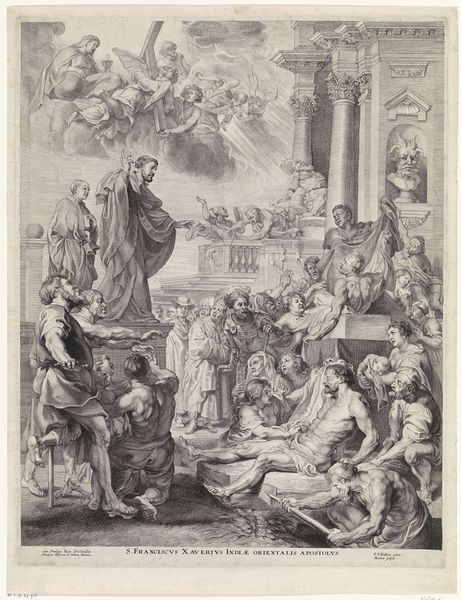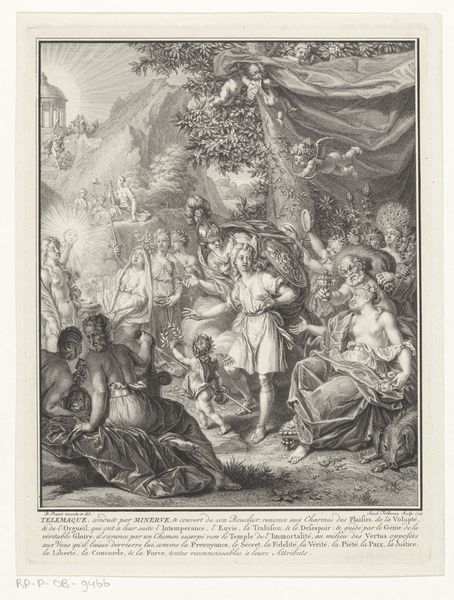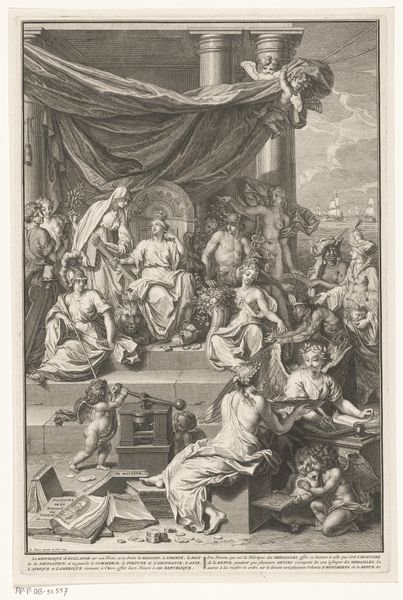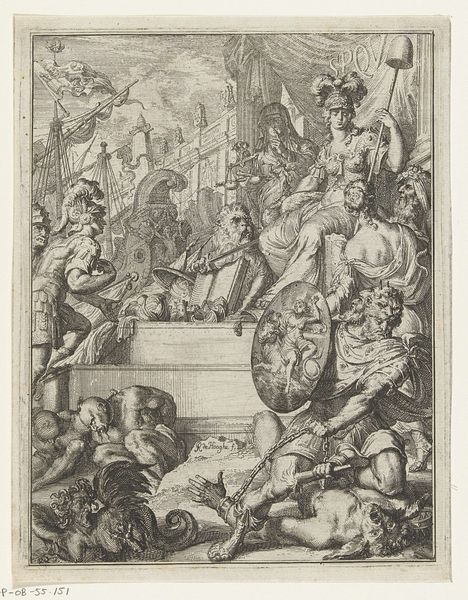
print, engraving
#
allegory
#
baroque
# print
#
figuration
#
form
#
line
#
history-painting
#
engraving
Dimensions: height 220 mm, width 164 mm
Copyright: Rijks Museum: Open Domain
Editor: We’re looking at “Title Page Design with the Triumph of the Art of Painting,” an engraving by Bernard Picart, dating back to around 1725. It’s incredibly detailed. I’m struck by the sheer number of figures depicted. It feels…theatrical, almost propagandistic. What do you make of it? Curator: It's a fascinating piece to consider, especially through the lens of power structures and representation. Look at how Painting, often personified as a woman, is being crowned and validated by other allegorical figures. Who benefits from this 'triumph,' and whose voices are potentially silenced or marginalized in this representation? Consider the socio-political context of the 18th century and how art served to legitimize certain narratives. Editor: That’s interesting. It seems like a straightforward celebration, but you're suggesting there’s a more critical reading to be had. The muscular, almost writhing figures at the bottom – are they representative of suppressed voices? Curator: Perhaps. Think about what kinds of bodies and stories are absent or relegated to the margins in mainstream art historical narratives. How does the glorification of ‘high art,’ often associated with the elite, contribute to the devaluation of other forms of creative expression or cultural traditions? Is there something subversive within what looks at first as idealised or are we just replicating traditional readings by ignoring gendered narratives. Editor: So, you are proposing this image needs re-evaluation through the issues of class and privilege… That hadn't occurred to me initially. Curator: Exactly! Considering gender, class, and cultural background. Are we implicitly complicit when engaging uncritically with artworks like this, within contemporary political contexts? Editor: I see. It's like understanding not just what the image *is,* but what it *does,* and who it serves. This helps to broaden the narrative to social concerns. Curator: Precisely. Hopefully we can view older works not only through how we perceive their technical artistry, but also how we approach history. Editor: Absolutely! Thanks. I'll consider this perspective.
Comments
rijksmuseum about 2 years ago
⋮
The native French draughtsman and engraver Bernard Picart moved to Amsterdam in 1710 because of the great demand there for prints for books. This is his design for the frontispiece from Histoire de la Peinture Ancienne, a book on the art of painting by the Roman author Pliny. Rome, seated on a throne at the right, elevates the Art of Painting, personified by an elegant woman presenting a picture.
Join the conversation
Join millions of artists and users on Artera today and experience the ultimate creative platform.
